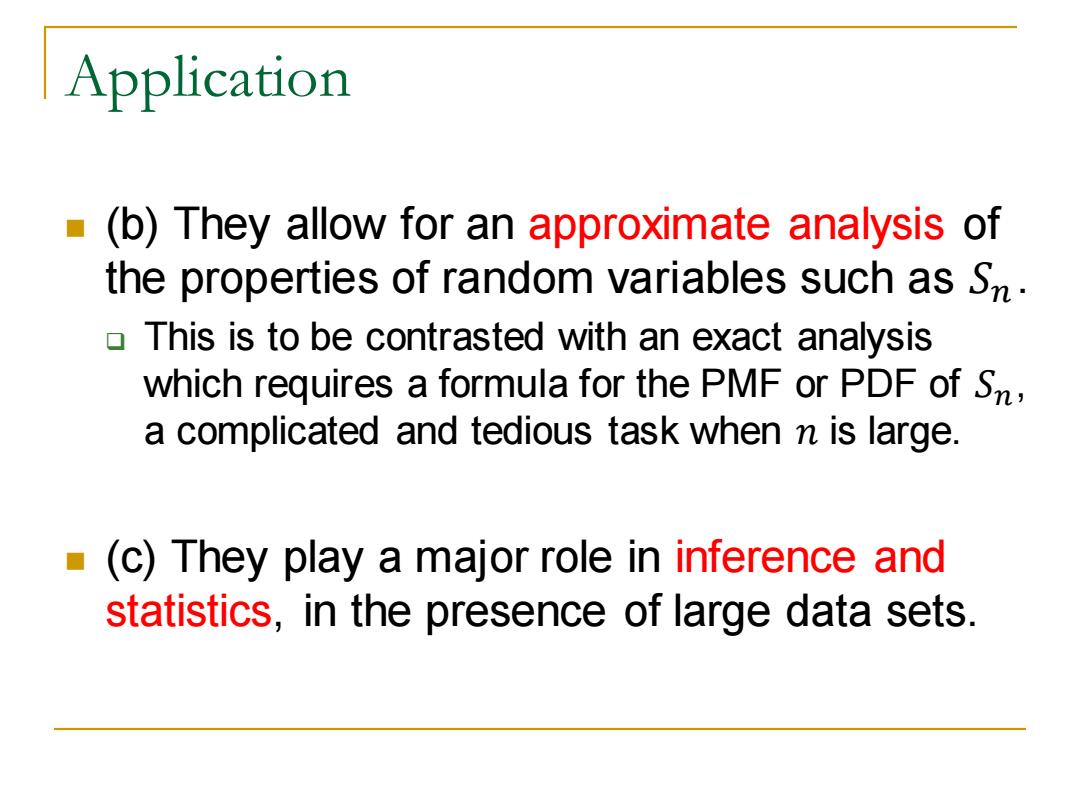
Application (b)They allow for an approximate analysis of the properties of random variables such as sn. This is to be contrasted with an exact analysis which requires a formula for the PMF or PDF of S, a complicated and tedious task when n is large. (c)They play a major role in inference and statistics,in the presence of large data sets
Application ◼ (b) They allow for an approximate analysis of the properties of random variables such as 𝑆𝑛. ❑ This is to be contrasted with an exact analysis which requires a formula for the PMF or PDF of 𝑆𝑛, a complicated and tedious task when 𝑛 is large. ◼ (c) They play a major role in inference and statistics, in the presence of large data sets
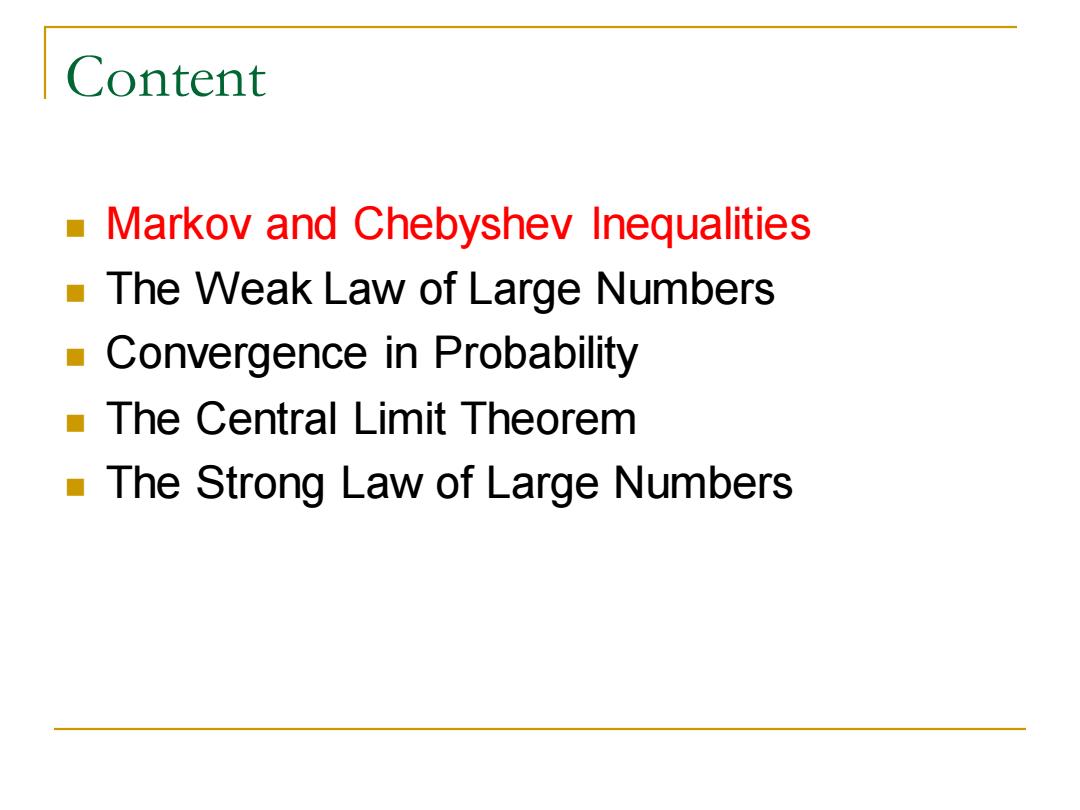
Content Markov and Chebyshev Inequalities The Weak Law of Large Numbers ■ Convergence in Probability The Central Limit Theorem The Strong Law of Large Numbers
Content ◼ Markov and Chebyshev Inequalities ◼ The Weak Law of Large Numbers ◼ Convergence in Probability ◼ The Central Limit Theorem ◼ The Strong Law of Large Numbers
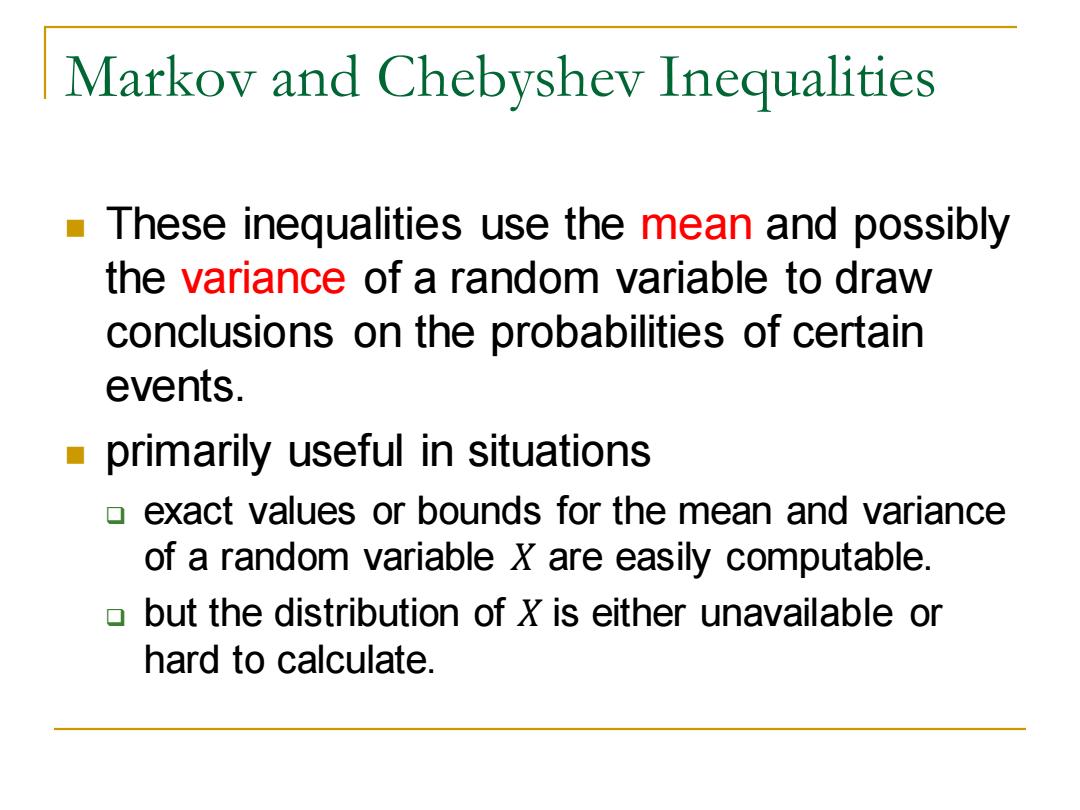
Markov and Chebyshev Inequalities These inequalities use the mean and possibly the variance of a random variable to draw conclusions on the probabilities of certain events. primarily useful in situations exact values or bounds for the mean and variance of a random variable X are easily computable o but the distribution of X is either unavailable or hard to calculate
Markov and Chebyshev Inequalities ◼ These inequalities use the mean and possibly the variance of a random variable to draw conclusions on the probabilities of certain events. ◼ primarily useful in situations ❑ exact values or bounds for the mean and variance of a random variable 𝑋 are easily computable. ❑ but the distribution of 𝑋 is either unavailable or hard to calculate
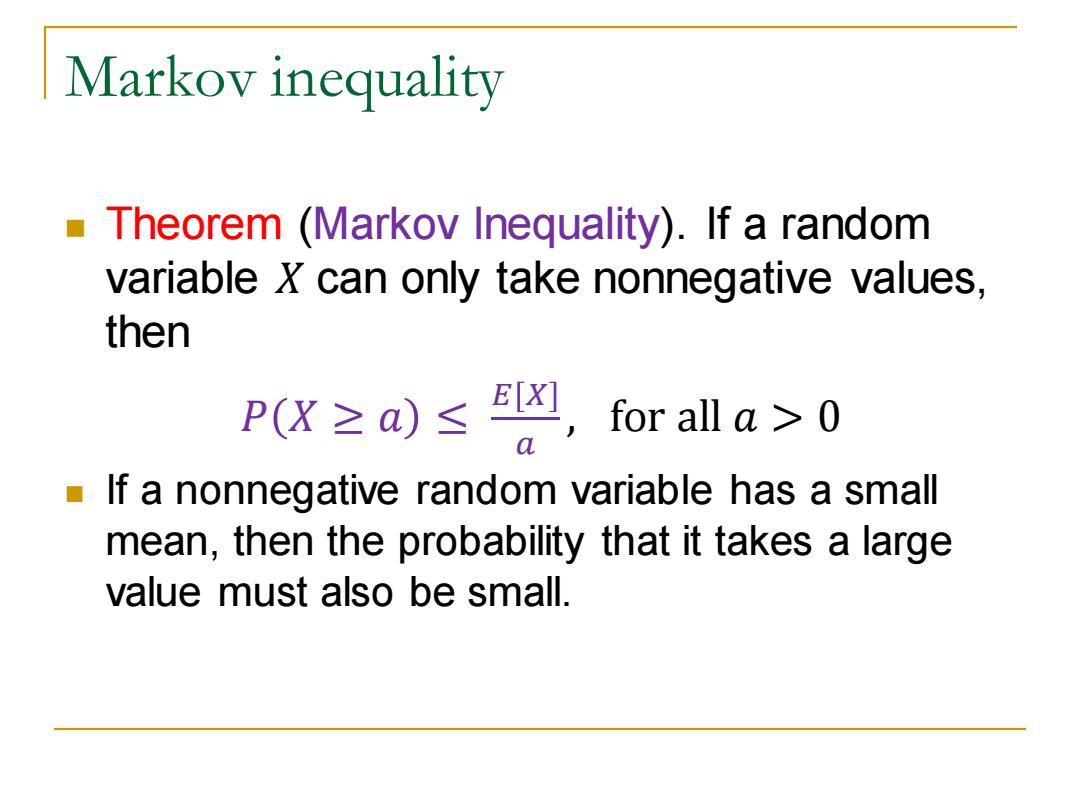
Markov inequality Theorem (Markov Inequality).If a random variable X can only take nonnegative values, then P(X≥a)≤ E[X] for all a 0 a If a nonnegative random variable has a small mean,then the probability that it takes a large value must also be small
Markov inequality ◼ Theorem (Markov Inequality). If a random variable 𝑋 can only take nonnegative values, then 𝑃 𝑋 ≥ 𝑎 ≤ 𝐸 𝑋 𝑎 , for all 𝑎 > 0 ◼ If a nonnegative random variable has a small mean, then the probability that it takes a large value must also be small
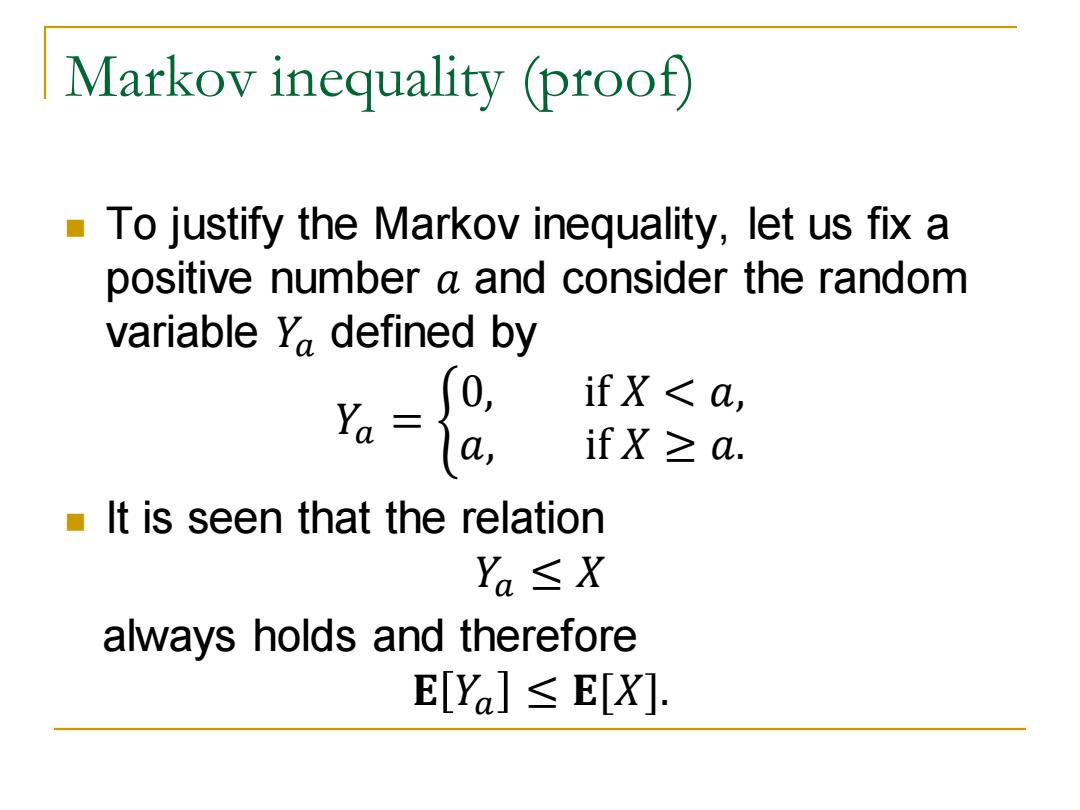
Markov inequality (proof) To justify the Markov inequality,let us fix a positive number a and consider the random variable Y defined by ifX a, ifx≥a. It is seen that the relation Ya≤X always holds and therefore E[Ya]≤E[X]
Markov inequality (proof) ◼ To justify the Markov inequality, let us fix a positive number 𝑎 and consider the random variable 𝑌𝑎 defined by 𝑌𝑎 = ቊ 0, if 𝑋 < 𝑎, 𝑎, if 𝑋 ≥ 𝑎. ◼ It is seen that the relation 𝑌𝑎 ≤ 𝑋 always holds and therefore 𝐄 𝑌𝑎 ≤ 𝐄[𝑋]